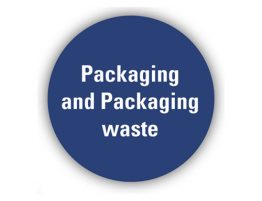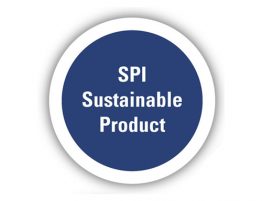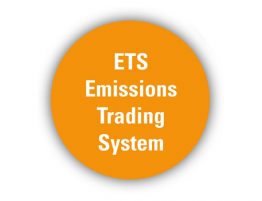European Standard EN 15804:2012+A2:2019 Sustainability of construction works – Environmental product declarations – Core rules for the product category of construction products
An Environmental Product Declaration (EPD) contains information related to the product environmental performance obtained using life cycle assessment methodology. Results are expressed for a detailed list of indicators declared for each stage of the construction product from the sourcing/supply of raw materials to the end of life.
One key indicator in EPD is the Global Warming Potential expressed in CO2 eq. yet it is not singled out, but provided together with other key indicators such as ozone depletion, acidification, eutrophication, depletion of abiotic resources, etc. The set of life cycle key indicators is complemented by other indicators including use of secondary materials, renewable energy etc. This is because complete information is key to preventing burden shifting and biased assessments.
EPDs do not allow direct product comparison but they provide the core and necessary information for the assessment of buildings and construction works in a holistic approach together with the design options, climate conditions and other constraints to the construction life cycle.
The assessment method for EPDs is described in the European standard EN 15804. The first version was recently revised and aligned as much as possible to the Product Environmental Footprint (PEF).
Environmental performance assessment must be carried out at building level
as environmental performance of construction products
is only one of the elements required to calculate the overall results
The main remaining differences to PEF are related to the declaration: EN 15804follows a modular approach and a different way for assessing and declaring end of life. These differences are justified and necessary because the environmental performance of construction products across their life cycle in the building or constructions works depends on the design, installation, operation, demolition, etc. Further developments might be possible including the use of a common upstream database and more consistent system boundaries, in order to increase comparability of EPDs and alignment with PEF.
The information provided in EPDs is neutral, objective and according to the last version of the European standard must cover at least production and end of life. EPDs may also provide information related to the other product life stages such as transport, installation and operation.
The assessment of the environmental performance of buildings is standardised in EN 15978 and is based on the information provided in EPDs according to EN 15804. The standard for the assessment of civil engineering works following the same premises and is expected to be published in 2022.
The European methodology for the assessment of the environmental performance of buildings – Level(s) is based on EN 15978 and therefore also on EPD information. Similar methodologies are implemented in private and public schemes in Europe and worldwide but only those using LCA and EPD information can be considered the state of the art in environmental assessment.
Verified EPDs are already available on the market for several years and it is expected that in the coming years more companies will provide their product environmental information on a voluntary basis. As any other performance declaration, the EPD content could also be integrated in the European regulatory framework, the Construction Products Regulation. In fact, the process was already initiated by the European Commission. Then, it was stopped again, but may be relaunched before or after the planned revision of the regulation.
Management of complex information available in EPDs require a standardised digitalisation approach, which is now being, standardised in ISO 22057 including product data templates to exchange EPD data. The development of IT tools in the context of the building assessment such as the methodology Level(s) will boost the use of accurate, digital manufacturer information for the assessment of construction works.
Core indicators
Climate change – total [kg CO2 eq.]
Climate change – fossil [kg CO2 eq.]
Climate change – biogenic [kg CO2 eq.]
Climate change – land use and land use change [kg CO2 eq.]
Ozone Depletion [kg CFC 11 eq.]
Acidification [mol H+ eq.]
Eutrophication aquatic freshwater [kg PO4 eq.]
Eutrophication aquatic marine [kg N eq.]
Eutrophication terrestrial [mol N eq.]
Photochemical ozone creation [kg NMVOC eq.]
Depletion of abiotic resources – mineral and metals [kg Sb eq.]
Depletion of abiotic resources – fossil fuels [MJ, net calorific value]
Water use [m3 world eq. deprived]
Additional indicators
Particulate matte remissions [Disease incidence]
Ionizing radiation, human health [kBq U235 eq.]
Ecotoxicity (freshwater) [CTUe]
Human toxicity, cancer effects [CTUh]
Human toxicity, non- cancer effects [CTUh]
Land use related impacts / soil quality
Environmental information describing waste categories
Hazardous waste disposed [kg]
Non-hazardous waste disposed [kg]
Radioactive waste disposed [kg]
Indicators describing resource use
Use of renewable primary energy excluding renewable primary energy resources used as raw materials [MJ, net calorific value]
Use of renewable primary energy resources used as raw materials [MJ, net calorific value]
Total use of renewable primary energy resources (primary energy and primary energy resources used as raw materials) [MJ, net calorific value]
Use of non-renewable primary energy excluding non-renewable primary energy resources used as raw materials [MJ, net calorific value]
Use of non-renewable primary energy resources used as raw materials [MJ, net calorific value]
Total use of non-renewable primary energy resources (primary energy and primary energy resources used as raw materials) [MJ, net calorific value]
Use of secondary material [kg]
Use of renewable secondary fuels [MJ, net calorific value]
Use of non-renewable secondary fuels [MJ, net calorific value]
Net use of fresh water [m3]
Environmental information describing output flows
Components for re-use [kg]
Materials for recycling [kg]
Materials for energy recovery [kg]
Exported energy [MJ per energy carrier]
Biogenic carbon content
Biogenic carbon content in product [kg C]
Biogenic carbon content in accompanying packaging [kg C]
List of indicators in EPD according to EN 15804+A2








